Photo Essay: Exploring the Rocks That Join the Americas
The formation of the slender land bridge that joins South America and North America was a pivotal event in earth’s history. At its narrowest along the isthmus of Panama, it changed not just the world map, but the circulation of oceans, the course of biologic evolution, and global climate. Cornelia Class, a geochemist at Columbia University’s Lamont-Doherty Earth Observatory, and Esteban Gazel, a Lamont adjunct researcher now based at Virginia Tech, are looking into a key factor: the Galápagos Plume.
Image Carousel with 20 slides
A carousel is a rotating set of images. Use the previous and next buttons to change the displayed slide
-
Slide 1: On the remote Azuero peninsula of western Panama, geologists are hunting for rocks that may help tell the story of a pivotal event in earthâs history: the formation of the slender land bridge joining the Americas. Centered on the isthmus of Pana
-
Slide 2: Only recently was a narrow paved road pushed through along the precipitous Azuero coast. Parts of the peninsula were once underwater volcanoes erupted from the deep earth and later pushed up onto land; this helped form the isthmus some 3 million to
-
Slide 3: Much of the peninsula is a geologistâs nightmare: covered with dense red soils and humid forests, there is hardly a rock in sight. Expedition leader Esteban Gazel of Virginia Tech (left) assesses terrain with a local volunteer (center) and Virgi
-
Slide 4: After dark, the team pores over large- and small scale maps, to pinpoint likely collection sites.
-
Slide 5: Getting almost anywhere inland requires walking and, often, getting soaked. In the fog following an afternoon rain torrent, Gazel and co-investigator Cornelia Class of Lamont-Doherty Earth Observatory ford a swollen creek.
-
Slide 6: Boulder-littered creek beds into which the hills erode, and where vegetation and dirt have been swept aside, are a good place to find rocks. Class pounds at a possible sample near the hamlet of Torio.
-
Slide 7: The team wants samples of picrite, an igneous rock that forms when magma from earthâs mantle begins to crystallize. But all kinds of rocks are found here, and most look alike from the outside. The only way to tell is split them open. In addition
-
Slide 8: It is along the coast, with its constant tectonic uplift and violent erosion, where rocks are most exposed. But with lack of roads and other obstacles, few sites are accessible by land. This wind-torn islet was reachable at low tide after a hike thr
-
Slide 9: To speed coastal travel, the researchers hire a local fisherman to take them out in his boat for a couple of daysâa welcome, if windy, respite from hiking in the rain.
-
Slide 10: Marco, the captain, knows every reef, inlet and island around hereâessential for getting in and out safely.
-
Slide 11: Many rock formations jut directly from the dangerously churning sea. Marco motored within yards of this small outcrop, but no one dared trying to land there.
-
Slide 12: With Gazel leading the way, the team swims to an island and gets up on the rocks, lugging their tools. (Photo by Cornelia Class)
-
Slide 13: Trela takes a turn smashing boulders on the island.
-
Slide 14: Class inspects a split-off chunk. It turns out to be a perfect specimen.
-
Slide 15: Greenish-yellow crystals of the mineral olivine are a hallmark of igneous rocks from the deep earth. Later chemical analyses done in the lab at Lamont will help reveal the circumstances of the rocksâ formation.
-
Slide 16: Swimming back to the boatâthis time weighted down not only by the tools, but a pile of samples.
-
Slide 17: The team makes many such stops, collecting samples over a wide area. Careful mapping of locations and plotting of the chemistry should reveal new findings about both deep-earth processes, and how they have affected this region over millions of years.
-
Slide 18: Geology is deeply connected to biology. Formation of the isthmus allowed flora and fauna from South and North America to mix, and formed a rich corridor for current wildlife migrations. At a local fishing harbor, vultures hang out at low tide.
-
Slide 19: The narrowest point between the Pacific and Atlantic oceans, the isthmus is now split artificially by the Panama Canalânot only a major shipping route, but a big tourist attraction, at the Miraflores Locks Visitor Center. The canal was a boon fo
-
Slide 20: For now, the team prefers working on the Azuero coast, and intends to return. It has the kind of rocks they are looking for. And, says Gazel, âit has nature all around.â
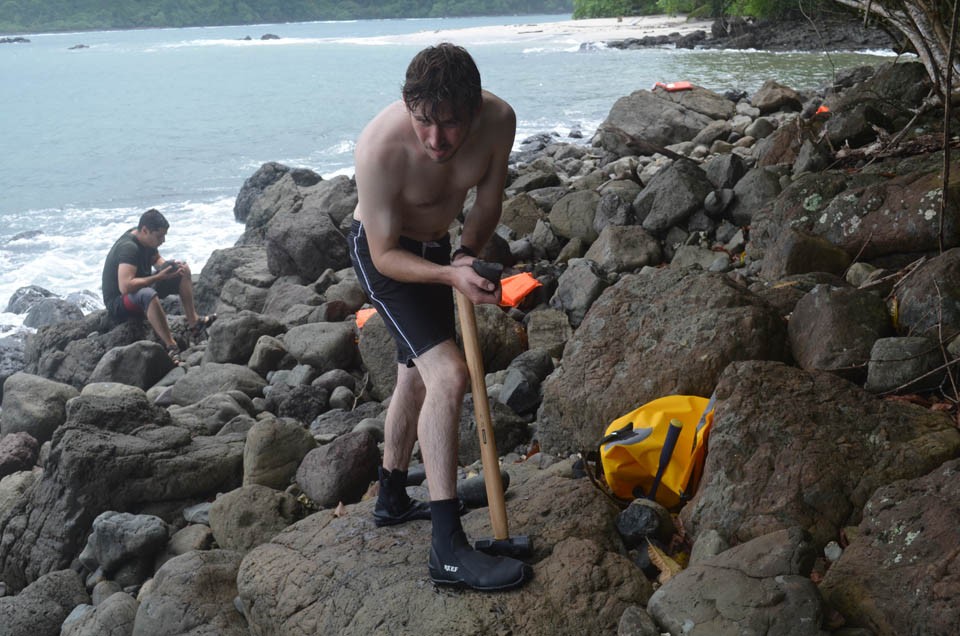
On the remote Azuero peninsula of western Panama, geologists are hunting for rocks that may help tell the story of a pivotal event in earthâs history: the formation of the slender land bridge joining the Americas. Centered on the isthmus of Pana

Only recently was a narrow paved road pushed through along the precipitous Azuero coast. Parts of the peninsula were once underwater volcanoes erupted from the deep earth and later pushed up onto land; this helped form the isthmus some 3 million to
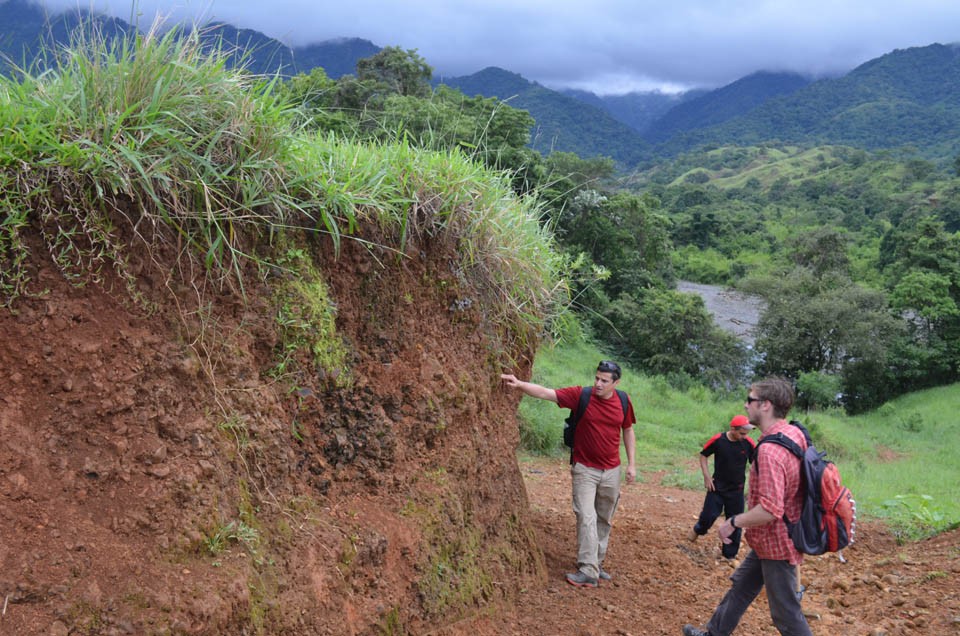
Much of the peninsula is a geologistâs nightmare: covered with dense red soils and humid forests, there is hardly a rock in sight. Expedition leader Esteban Gazel of Virginia Tech (left) assesses terrain with a local volunteer (center) and Virgi
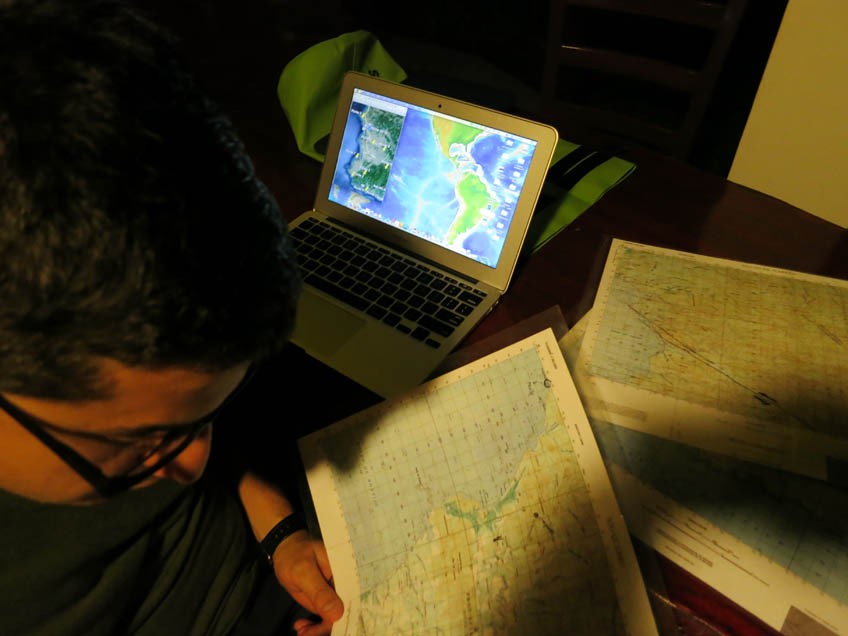
After dark, the team pores over large- and small scale maps, to pinpoint likely collection sites.
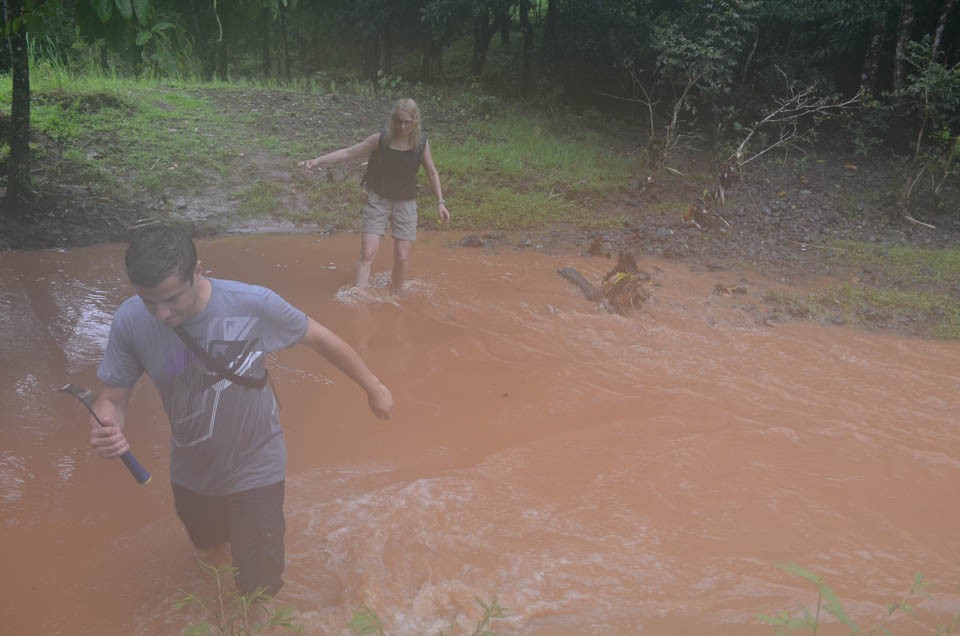
Getting almost anywhere inland requires walking and, often, getting soaked. In the fog following an afternoon rain torrent, Gazel and co-investigator Cornelia Class of Lamont-Doherty Earth Observatory ford a swollen creek.
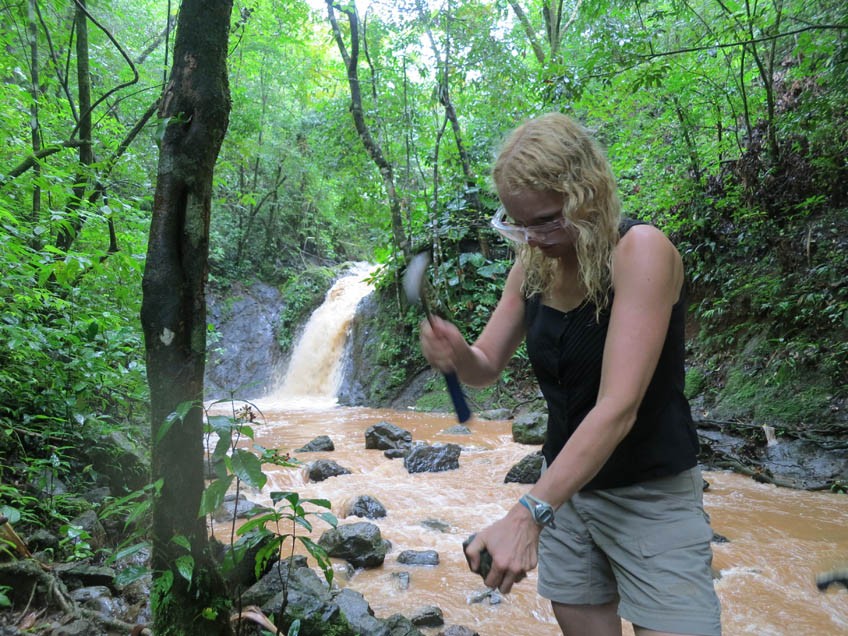
Boulder-littered creek beds into which the hills erode, and where vegetation and dirt have been swept aside, are a good place to find rocks. Class pounds at a possible sample near the hamlet of Torio.
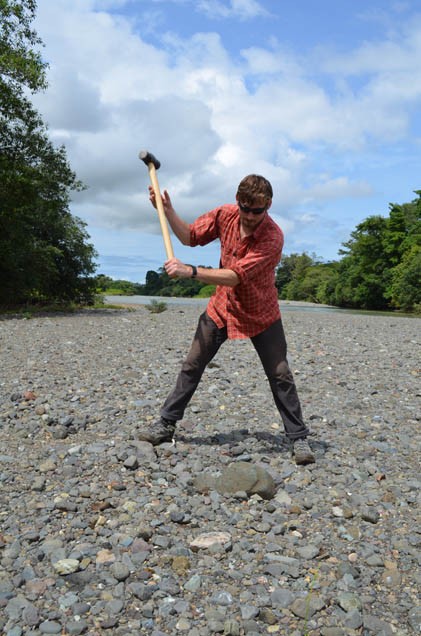
The team wants samples of picrite, an igneous rock that forms when magma from earthâs mantle begins to crystallize. But all kinds of rocks are found here, and most look alike from the outside. The only way to tell is split them open. In addition
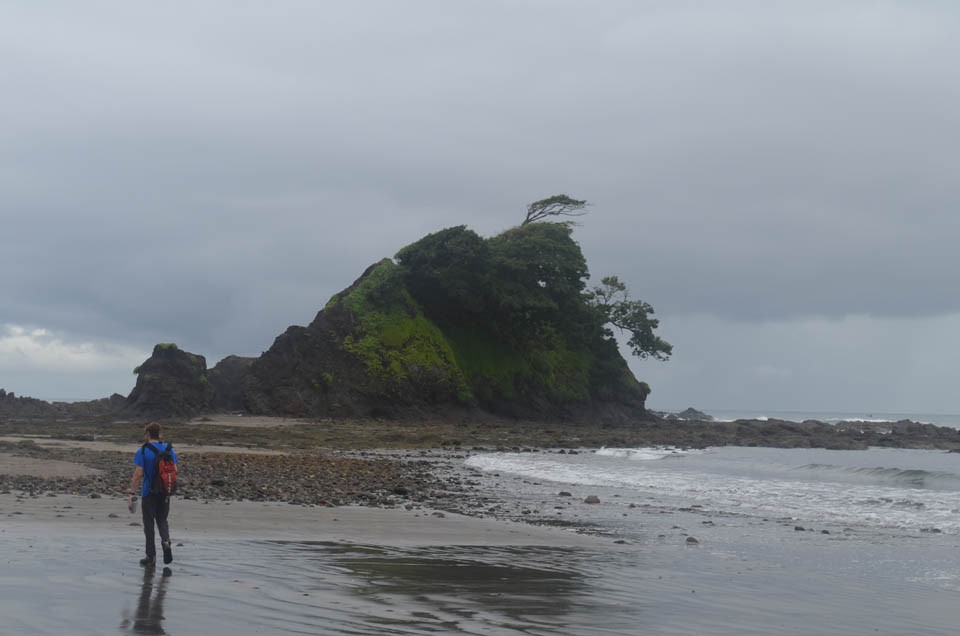
It is along the coast, with its constant tectonic uplift and violent erosion, where rocks are most exposed. But with lack of roads and other obstacles, few sites are accessible by land. This wind-torn islet was reachable at low tide after a hike thr
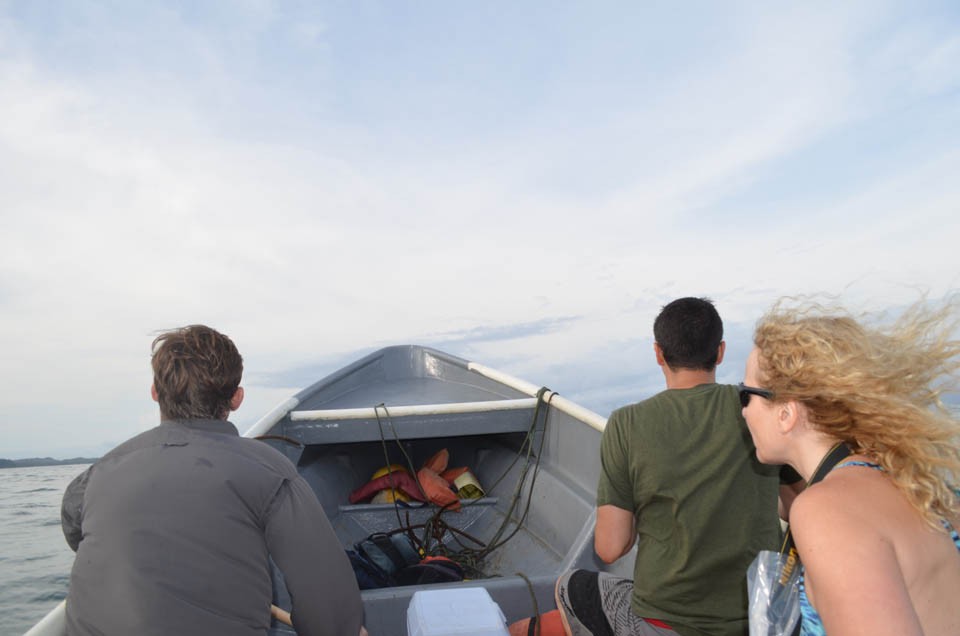
To speed coastal travel, the researchers hire a local fisherman to take them out in his boat for a couple of daysâa welcome, if windy, respite from hiking in the rain.
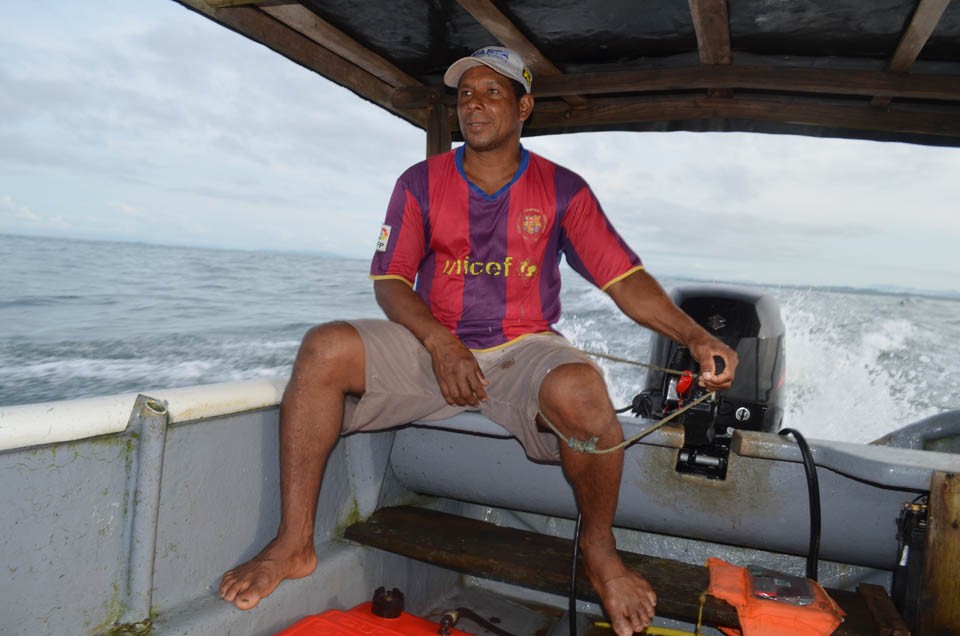
Marco, the captain, knows every reef, inlet and island around hereâessential for getting in and out safely.
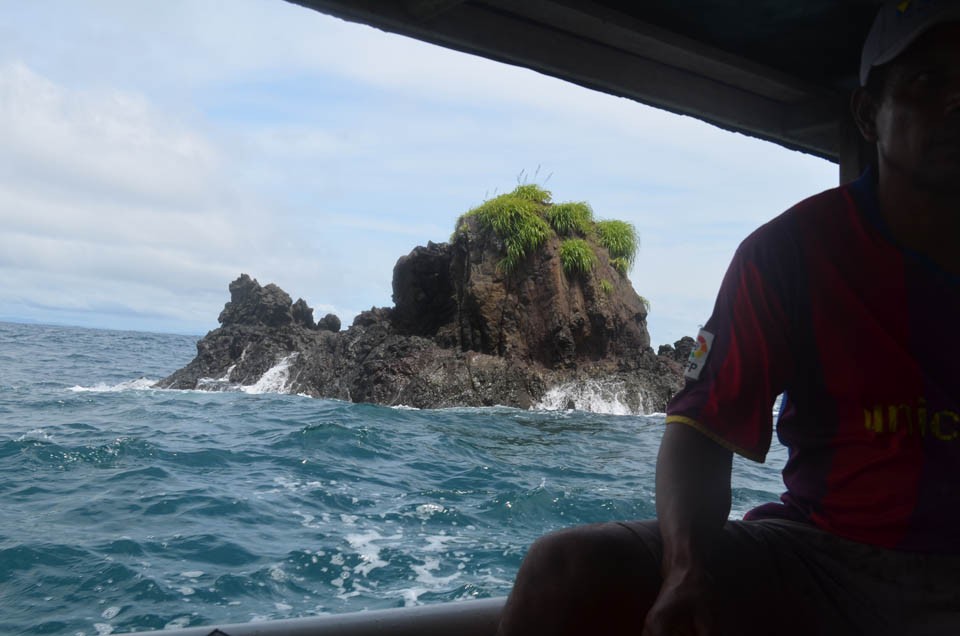
Many rock formations jut directly from the dangerously churning sea. Marco motored within yards of this small outcrop, but no one dared trying to land there.
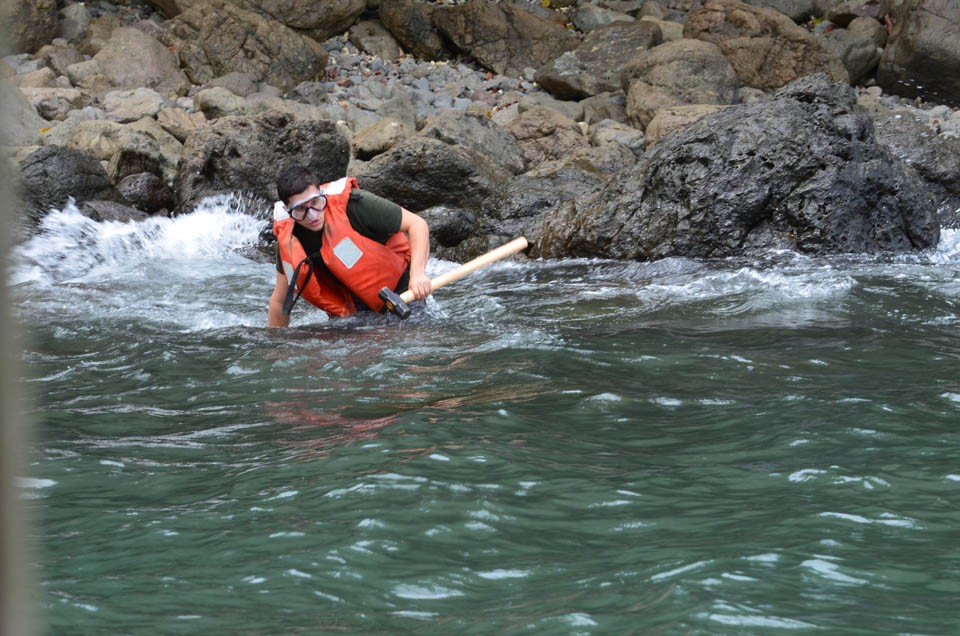
With Gazel leading the way, the team swims to an island and gets up on the rocks, lugging their tools. (Photo by Cornelia Class)
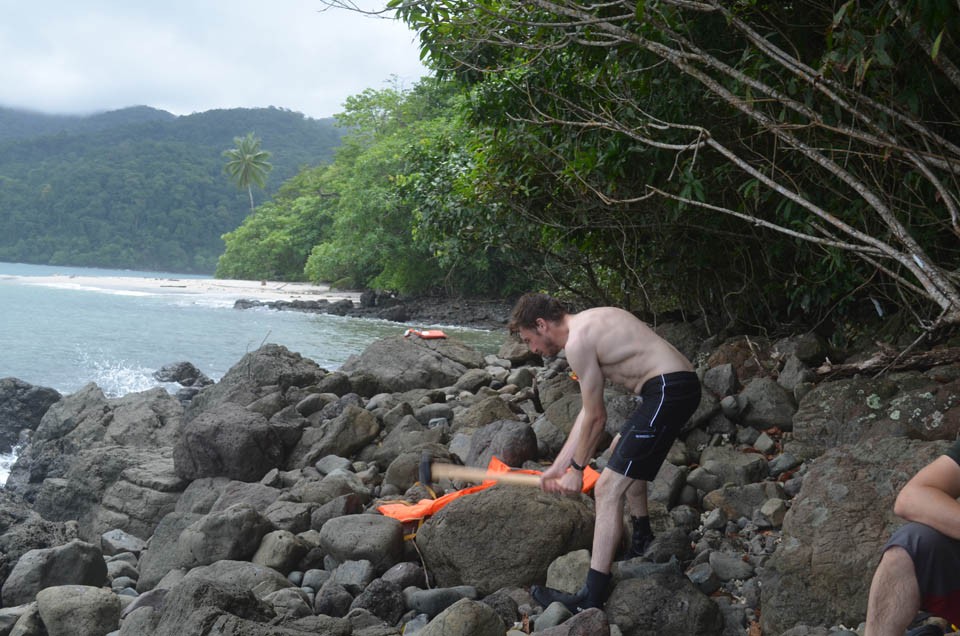
Trela takes a turn smashing boulders on the island.
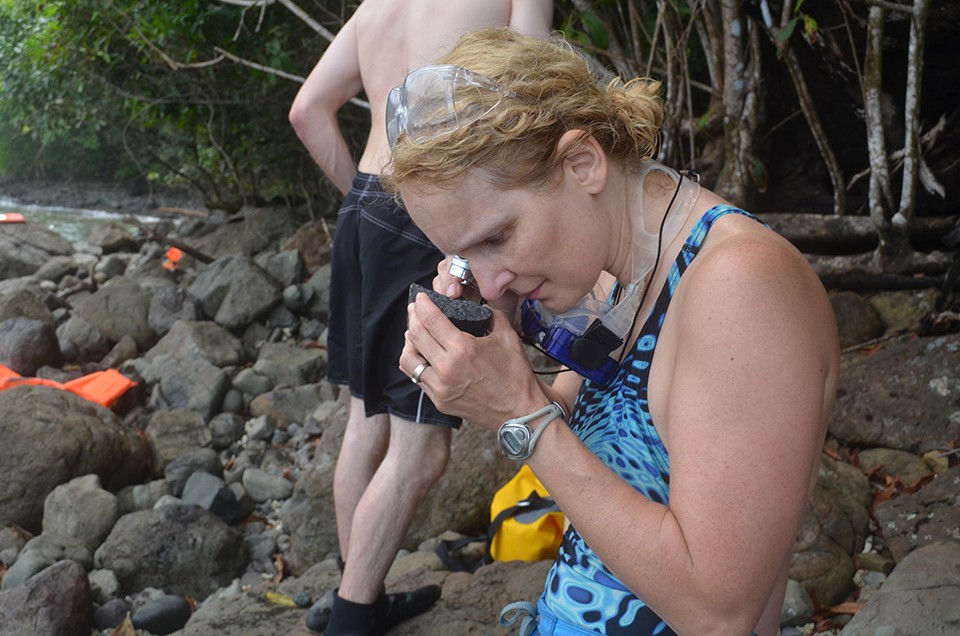
Class inspects a split-off chunk. It turns out to be a perfect specimen.
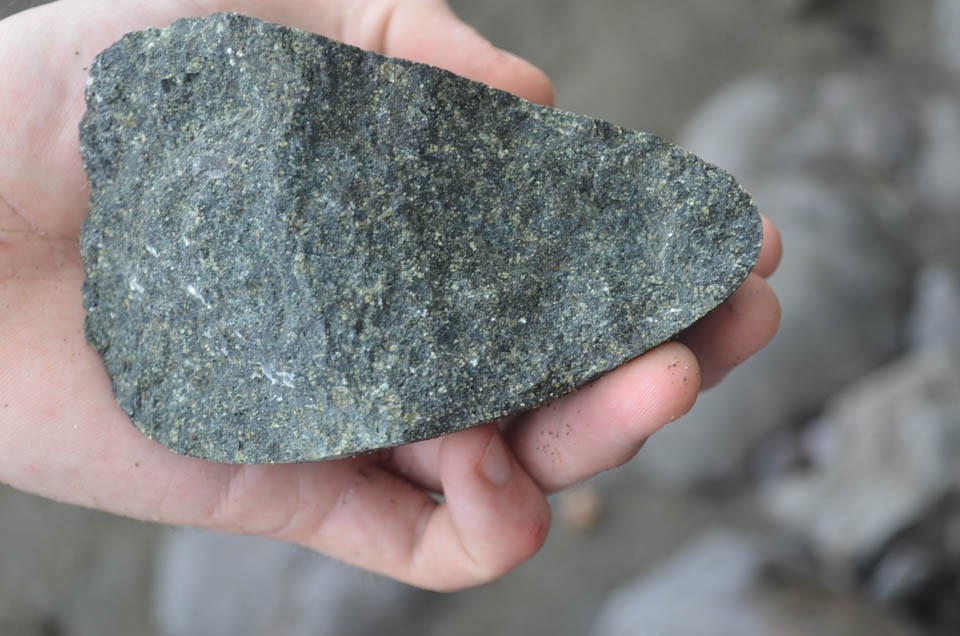
Greenish-yellow crystals of the mineral olivine are a hallmark of igneous rocks from the deep earth. Later chemical analyses done in the lab at Lamont will help reveal the circumstances of the rocksâ formation.
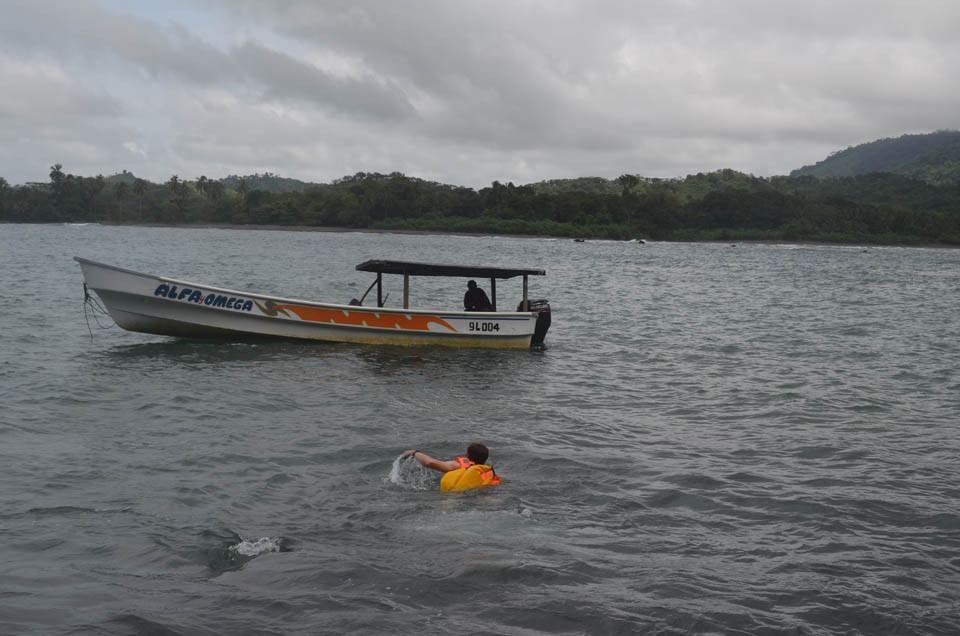
Swimming back to the boatâthis time weighted down not only by the tools, but a pile of samples.

The team makes many such stops, collecting samples over a wide area. Careful mapping of locations and plotting of the chemistry should reveal new findings about both deep-earth processes, and how they have affected this region over millions of years.
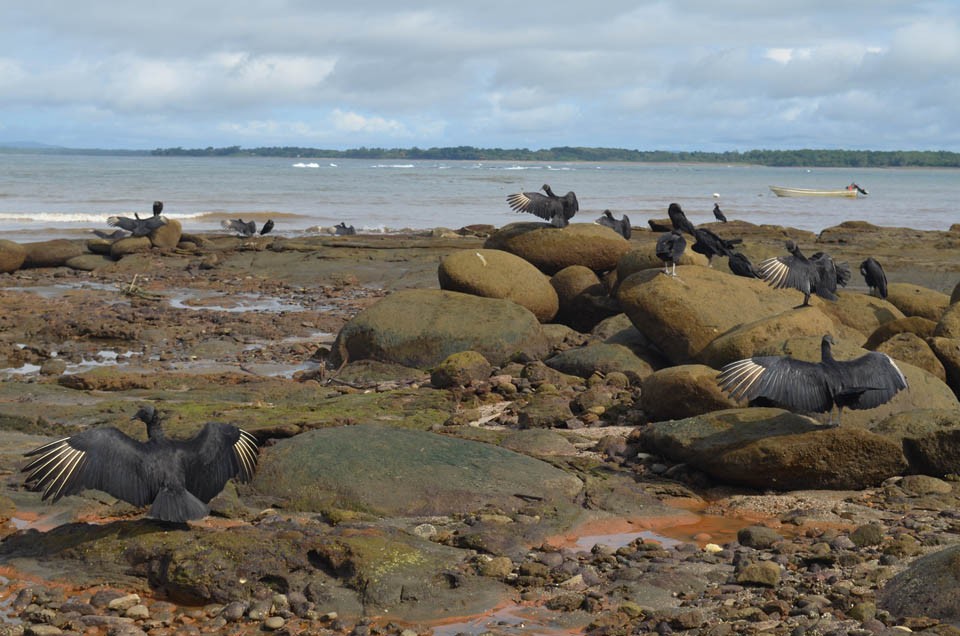
Geology is deeply connected to biology. Formation of the isthmus allowed flora and fauna from South and North America to mix, and formed a rich corridor for current wildlife migrations. At a local fishing harbor, vultures hang out at low tide.
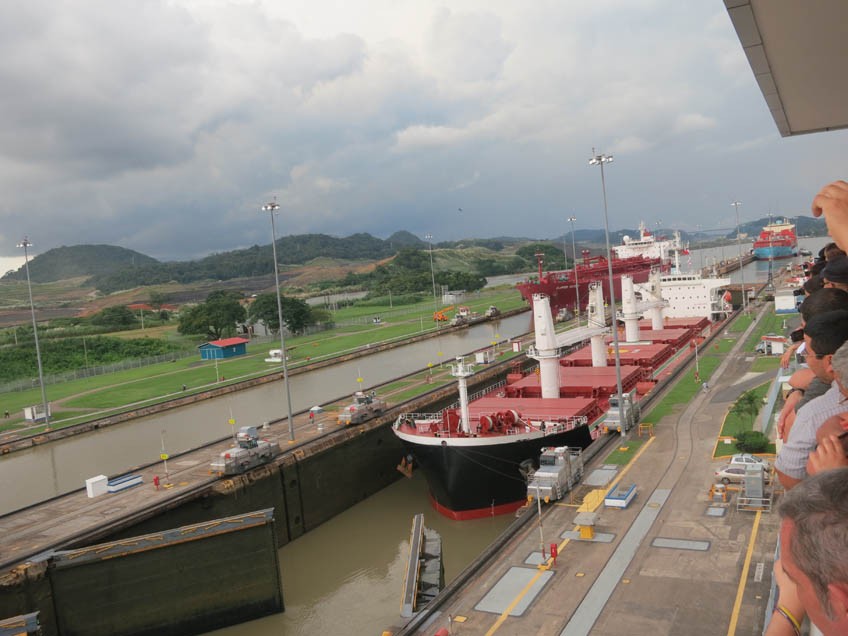
The narrowest point between the Pacific and Atlantic oceans, the isthmus is now split artificially by the Panama Canalânot only a major shipping route, but a big tourist attraction, at the Miraflores Locks Visitor Center. The canal was a boon fo
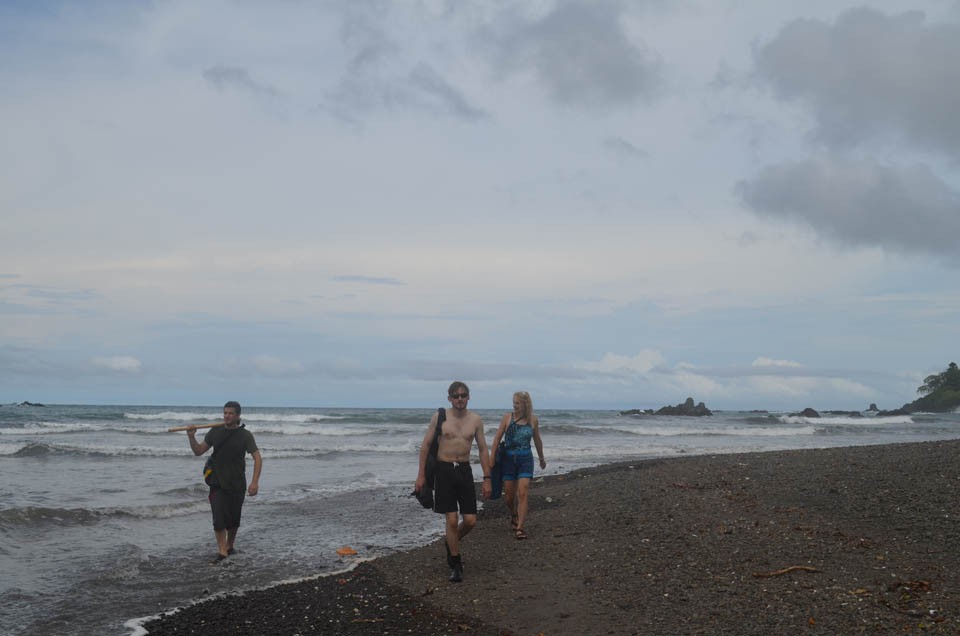
For now, the team prefers working on the Azuero coast, and intends to return. It has the kind of rocks they are looking for. And, says Gazel, âit has nature all around.â
The formation of the slender land bridge that joins South America and North America was a pivotal event in earth’s history. At its narrowest along the isthmus of Panama, it changed not just the world map, but the circulation of oceans, the course of biologic evolution, and global climate. Cornelia Class, a geochemist at Columbia University’s Lamont-Doherty Earth Observatory, and Esteban Gazel, a Lamont adjunct researcher now based at Virginia Tech, are looking into a key factor: the Galápagos Plume. This is a long-lived upwelling of super-hot magma from the deep earth that has formed strings of volcanoes that later became part of the land bridge. They recently spent a week on western Panama’s remote Azuero peninsula collecting rocks produced by the plume millions of years ago. What they are finding sheds light not only the geologic history of Central America, but the processes of the deep earth.
Read the full scientific story
